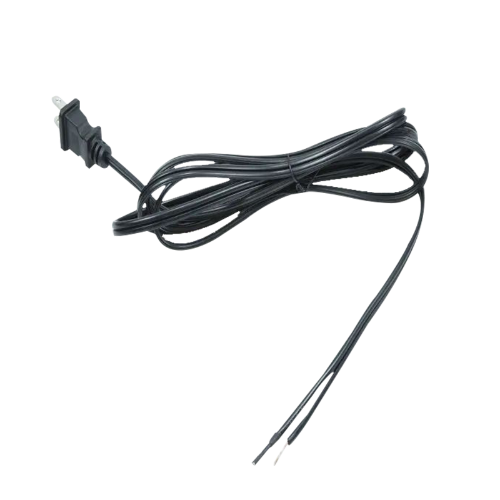To maintain a power connection cable, here are some general guidelines you can follow:
Regular Inspection: Periodically inspect the power connection cable for any signs of damage, such as frayed wires, exposed insulation, or loose connections. If you notice any issues, discontinue use and replace the cable.
Cleanliness: Keep the cable clean and free from dust, dirt, or other contaminants. Wipe it down with a dry cloth regularly to prevent the buildup of debris.
Avoid Overloading: Do not overload the cable by plugging too many devices into a single power strip or outlet. Overloading can lead to overheating and potential damage to the cable. Spread out the load across multiple outlets or use a surge protector if necessary.
Proper Storage: When not in use, coil the cable loosely and avoid tight bends or knots, as they can cause damage to the wires inside. Store the cable in a dry, cool place, away from direct sunlight and excessive heat.
Unplugging: When unplugging the power connection cable, always pull it by gripping the plug firmly rather than yanking on the cable itself. Pulling on the cable can strain the internal wires or loosen the connections.
Avoid Tugging: Avoid tugging or tripping over the cable, as it can damage the wires or connectors. Keep the cable away from heavy furniture or foot traffic areas to minimize the risk of accidental damage.
Protect from Moisture: Keep the power connection cable away from water or excessive moisture. Moisture can damage the insulation and cause electrical hazards. If you need to use the cable outdoors, make sure it is rated for outdoor use and protected from rain or other environmental elements.
Check Compatibility: Ensure that the power connection cable is compatible with the devices you are connecting. Different devices may require different cable specifications, such as voltage and current ratings. Using an incompatible cable can lead to performance issues or damage to the devices.
Regular Replacement: Power connection cables can wear out over time due to use and exposure to environmental factors. It is a good practice to replace the cables periodically or if you notice any significant damage or degradation.

US standard 2 pin plug power connection cable, good conductivity, tight bonding, not easy to fall off, 100% all copper core wire, low resistance, better conductivity, more power saving, wide range of universal interfaces, resistant to plugging, the other end has been stripped, can be used for plug boards, dishwashers, electric fans and other household appliances, high adaptability

US standard 2 pin plug power connection cable, good conductivity, tight bonding, not easy to fall off, 100% all copper core wire, low resistance, better conductivity, more power saving, wide range of universal interfaces, resistant to plugging, the other end has been stripped, can be used for plug boards, dishwashers, electric fans and other household appliances, high adaptability



 English
English русский
русский















